Start Your Free Trial!
Sign up to our newsletter, stay updated on news and exclusive offers from EaseUS. Don't worry, if you change your mind, you can unsubscribe at any time, free of charge. We value your privacy (Privacy Policy).
Page Table of Contents
Why "The System Cannot Find Any Bootable Devices" HappensHOT
How to Fix "The System Cannot Find Any Bootable Device"HOT
Conclusion HOT
FAQs About The System Cannot Find Any Bootable DevicesHOT
About the Author
Hot Topics
Updated on Apr 28, 2025
The booting sequence is a critical process that initiates the operating system and readies a computer for user interaction. However, facing the "The system cannot find any bootable devices" error can be distressing for users. In this article, EaseUS will help you learn why this error occurs and how to resolve it effectively.
View the Necessary Information to Fix System Cannot Find Any Bootable Devices:
| ⏲️Duration | 3-6minutes of reading |
| 🚩Goal | Fix no bootable devices could be found errors on Windows 10/11 |
| 🧑💻Causes |
Improper BIOS/UEFI settings Corrupted boot files |
| ⭐Solution |
This error message shows that the computer OS cannot locate a valid boot device during startup. The same situation may also happens in notebook and shows "no bootable image found, notebook will be shut down." There can be quite a few reasons that lead leads to a nonfunctional system, leaving you in a state of uncertainty. Some common causes of The system cannot find, and bootable device" error is as follows:
A Reddit user shared their distressing experience with this error:
Don't worry. Addressing these underlying causes can restore your computer's functionality and return to a seamless computing experience. Stay tuned for the following section, where we will walk you through step-by-step solutions to resolve this error and bring your system back to life.
How to Fix BIOS Recognizes SSD But Won't Boot
Troubleshoot why BIOS recognizes SSD but won't boot to learn effective fixes & solutions to resolve this issue and get your system running smoothly.

Here are some solutions that can assist you in recovering the "The system cannot find and bootable device" error:
Before diving into complex solutions, ensuring the basics are in order is essential. Follow these quick checks:
If these are okay, keep checking below for more options. If other users are also experiencing these difficulties,, click the button below to share and help others.
The BIOS (Basic Input/Output System) is a crucial component of your computer's startup process, and adjusting specific configurations can often make a significant difference in the system's ability to recognize and boot from the correct devices. This solution will explore three essential guides to tweak the BIOS settings, including:
2️⃣Turn on Compatibility Support Module (CSM)
To address boot issues related to Secure Boot, you can follow a simple three-step process to disable it in the BIOS/UEFI settings. Disabling Secure Boot can allow your system to recognize bootable devices more effectively:

Enabling Compatibility Support Module (CSM) can help with legacy booting and resolving boot device detection problems. You can access the BIOS settings in three steps, enabling CSM to overcome the error:

Altering the boot order in BIOS/UEFI can ensure that the correct bootable device is first recognized during system startup. You can adjust the boot order and resolve the booting issue in three steps:

By changing the startup order, you can solve some of the problems related to startup. This is the most important step in booting your computer from a bootable USB. For more detailed information please click the button below:
By designating the system partition as the active partition, you can ensure that your computer identifies it as the primary bootable partition. You can use the Windows installation media to enter the Windows recovery environment or refer to the following steps to mark the system partition as active and possibly fix the boot issues.
Step 1. Repeatedly shut down and restart your computer. Go to the recovery screen when you see the Windows logo.
Step 2. Go to the Command Prompt screen through the advanced options.
Step 3. Enter the following commands in sequence and set the system partition as the active partition:

The boot sector contains vital booting information, and if it becomes corrupted, it can trigger the "The system cannot find any bootable devices" error. That's where the EaseUS Partition Master comes in.
EaseUS Partition Master's "Rebuild MBR" feature offers a more comprehensive approach to resolving MBR-related problems. The tool simplifies the steps to repair MBR by creating Windows bootable disks. You don't need to worry about wrong operations.
Before officially repairing the MBR, run EaseUS Partition Master on another good computer and create a bootable disk:
Step 1. Create a WinPE bootable disk
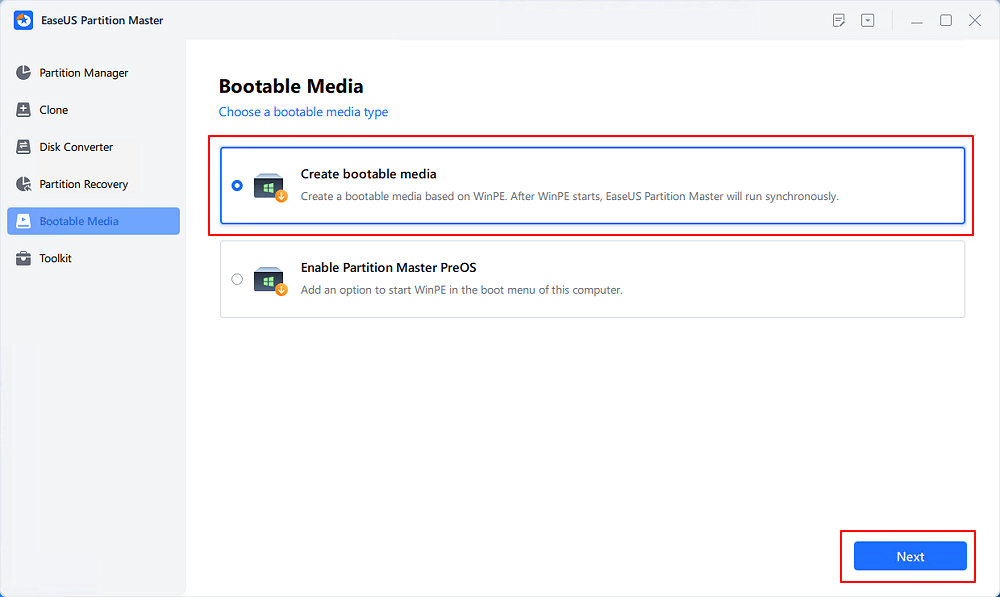
Step 2. Boot EaseUS Partition Master Bootable USB
Step 3. Rebuild MBR

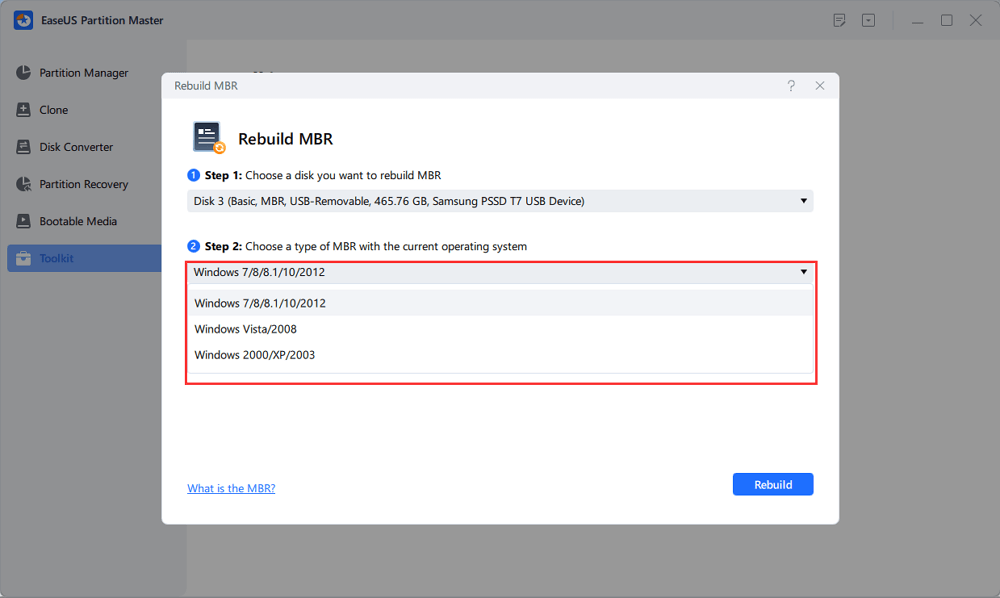
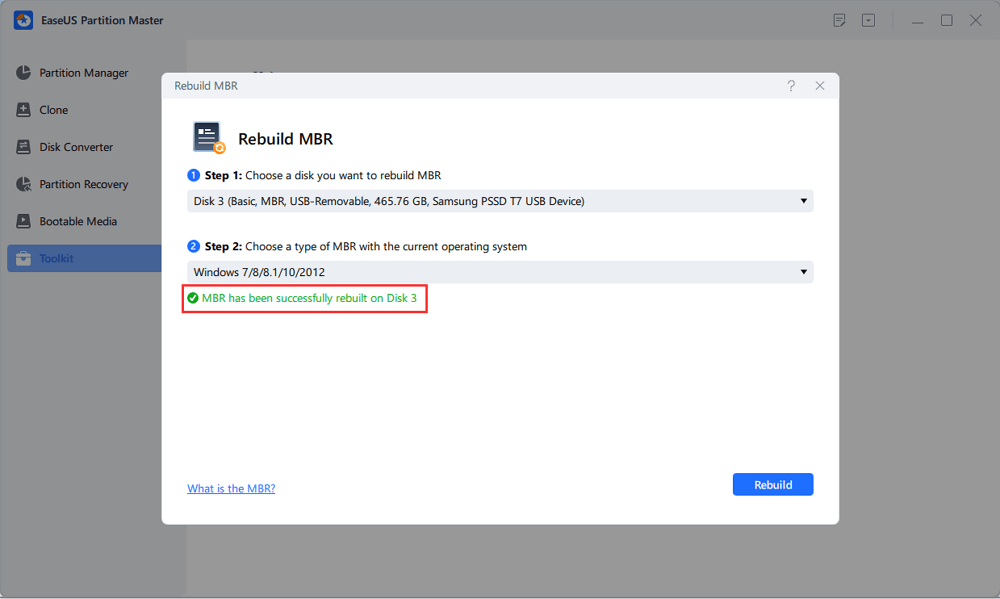
Sometimes, changing the partition style of your disk can resolve boot-related issues. Using an older Windows system, you can switch to MBR. If in UEFI mode, use the GPT format. Similarly, after creating a bootable USB with EaseUS Partition Master, you can change the partition style using the tool. In this way, you can also format hard drive from BIOS in Windows 10:
Here is the full guide to changing the partition style from BIOS:
Step 1. Connect an empty USB flash drive, or a CD/DVD disc to a healthy computer, launch EaseUS Partition Master, click "Bootable Media" and select "Create bootable media". Click "Next" to continue.

Step 2. Choose the USB or CD/DVD and click "Create" to start create the bootable media.

Step 3. Connect the USB with bootable media to your PC and restart the computer from EaseUS bootable media.
Press F2/Del to enter BIOS and set the computer to boot the PC from "Removable Devices" (bootable USB disk) or "CD-ROM Drive" (bootable CD/DVD). Press "F10" to save and exit to restart PC into EaseUS bootable media.
Step 4. Once your PC enter EaseUS Partition Master, go to Disk Converter and select "Convert MBR to GPT". Click "Next" to continue.
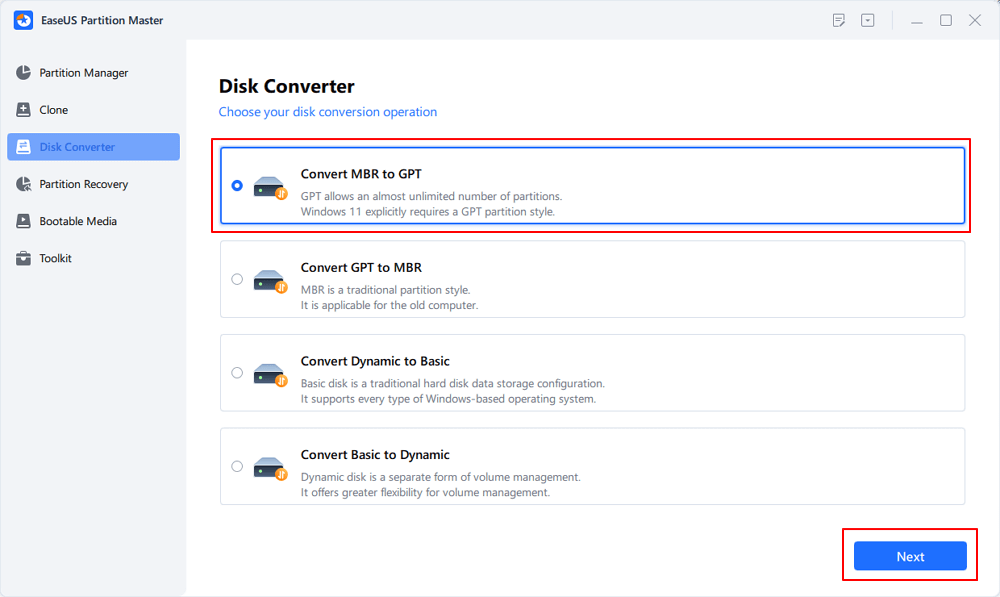
Step 5. Select the target MBR disk you tend to convert to GPT and click "Convert" to start the conversion.
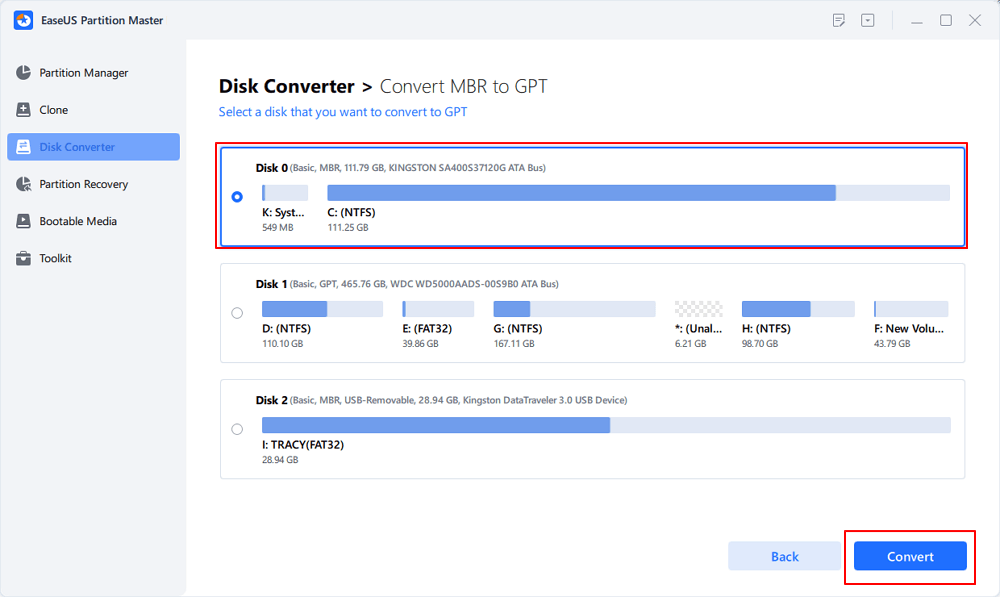
EaseUS Partition Master is a versatile solution with a powerful "Boot Repair" feature. This tool has undergone rigorous research and development to tackle various boot problems easily, such as no bootable devices found on Dell/Acer or other boot errors.
To use this tool and resolve boot errors, free download this powerful tool and find its useful solutions.
Step 1. Start EaseUS Partition Master after connecting the external drive/USB to your computer, go to "Bootable Media," and click "Create bootable media."

Step 2. Select an available USB Drive or CD/DVD and click "Create." You can also burn the Windows ISO file to the storage media.

Step 3. Connect the created bootable drive to the new computer and reboot the computer by pressing and holding F2/Del to enter the BIOS. Then, set the WinPE bootable drive as the boot disk and press F10 to exit.
Step 4. Boot the computer again and enter the WinPE interface. Then, open EaseUS Partition Master and click "Boot Repair" under the "Toolkit" option.
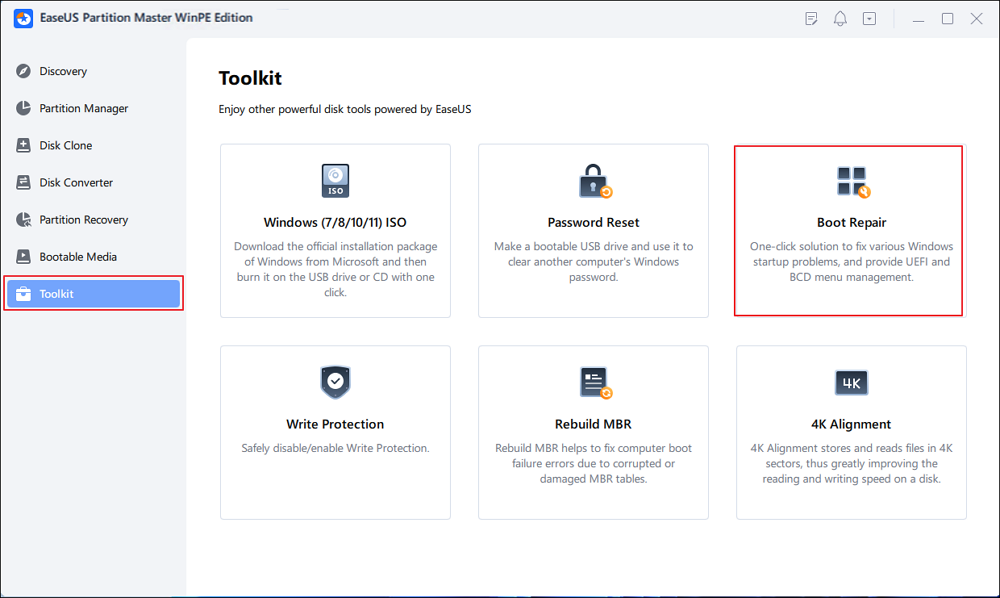
Step 5: Select the system you want to repair and click "Repair."
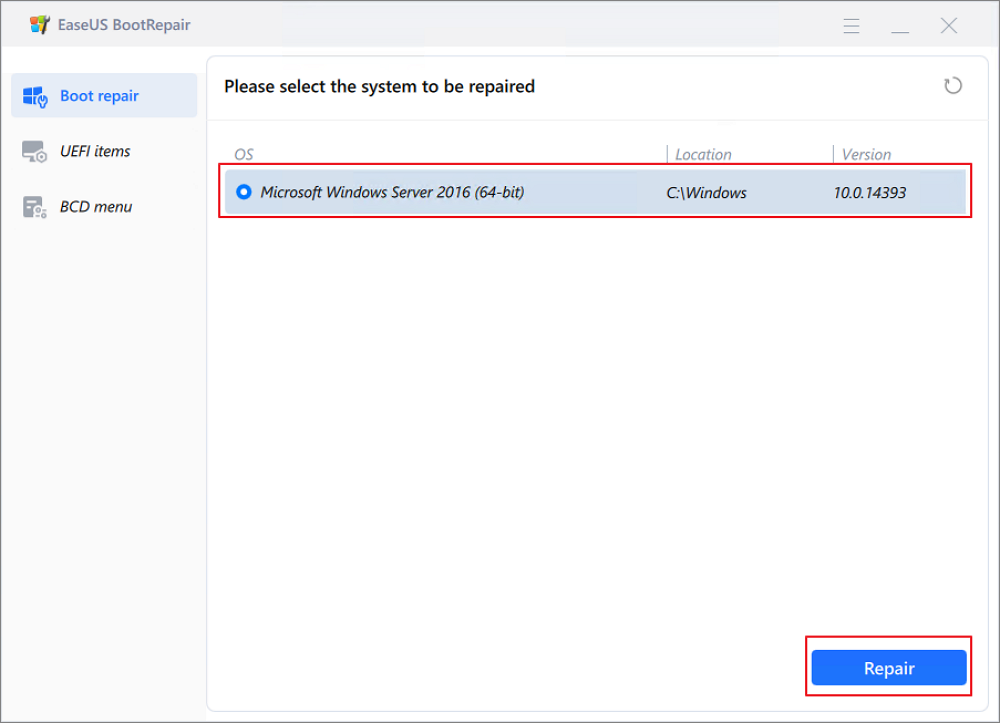
Step 6. Wait a moment, and you will receive an alert that the system has been successfully repaired. Click "OK" to complete the boot repair process.
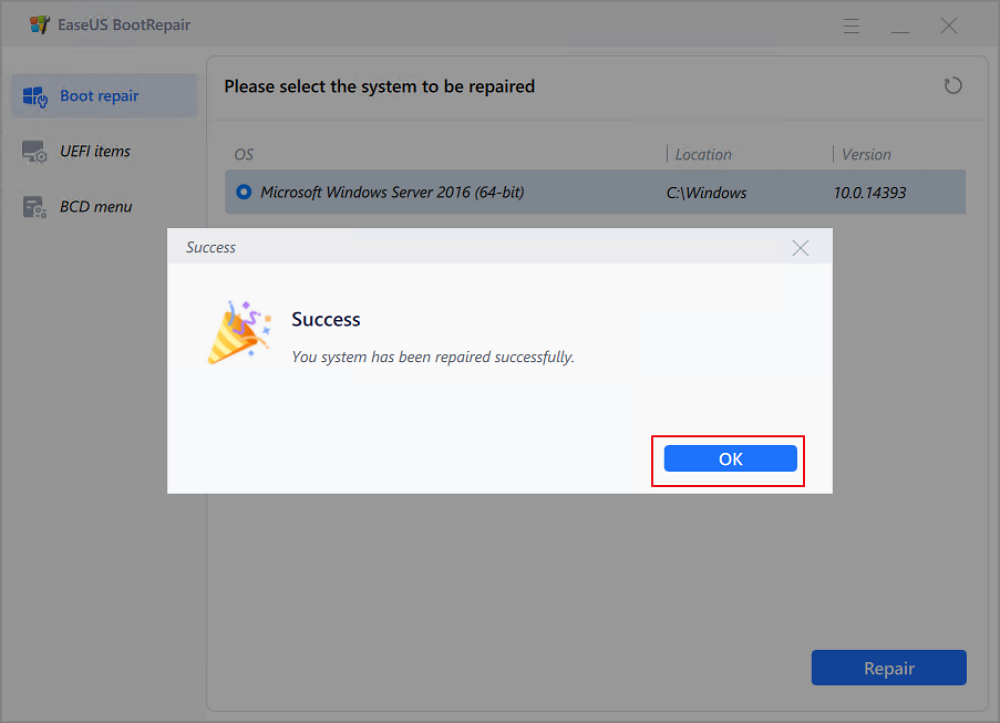
If you have any further questions, please feel free to contact our support:
EaseUS experts are available to provide you with 1-on-1 manual services (24*7) and help fix Windows boot error, BSOD or computer boot loop issues. Our experts will offer you FREE evaluation services and efficiently diagnose and resolve system boot failure, Windows stop codes and OS lagging issues using their decades of experiences.
In some cases, installing a fresh Windows operating system can be the most reliable solution. While this is a more involved process, a clean installation can help eliminate persistent boot issues and provide a fresh start for your system.
Following these solutions, you can address the "The system cannot find any bootable devices" error and restore your computer's functionality. Remember to proceed cautiously, and if you're unsure, seek assistance from a qualified professional to avoid data loss or further complications.
How to Reinstall Windows 11 Without Losing Data
Sometimes situations may occur like you need to reinstall your Windows 11 without losing data. Here we have mentioned four different ways following which you can reinstall your OS and all data will remain safe. Even the license will remain intact.

"The system cannot find any bootable devices" error can cause frustration during computer startup. In this article, we explored its causes and provided effective solutions. Check connections and modify BIOS settings, such as disabling Secure Boot and changing boot order.
EaseUS Partition Master's "Boot Repair" feature benefits comprehensive solutions. Utilizing these most efficient methods allows you to troubleshoot and resolve the issue without a Windows reinstallation. For complex tasks, seek professional help. Turn to EaseUS Partition Master for a seamless experience. With these solutions, you regain control over your computer's startup and overcome booting challenges.
If you still have questions or seek further clarification about the error "The system cannot find any bootable devices," we have compiled some commonly asked questions and answers to guide you:
1. Why my Asus laptop was unable to find bootable devices?
The error could be due to improper BIOS settings, a faulty or disconnected hard drive, corrupted boot files, or misconfigured boot order. Check these aspects and follow the solutions provided in the article to resolve the issue.
2. How can the "no bootable device found" error be fixed?
No bootable device found means Windows cannot find a drive to boot the system. A variety of reasons may cause this problem. You can fix the problem by following several options:
3. How to enable the bootable device in BIOS?
Access BIOS/UEFI settings during startup (pressing F2, F10, or Delete key). Navigate to the "Boot" or "Security" section, find the bootable device, and enable it or set it as the first boot priority depending on your motherboard.
For any other questions or doubts, refer to this article for comprehensive solutions and a step-by-step guide to resolve the booting issue effectively.
How Can We Help You
Roxanne is one of the main contributors to EaseUS and has created over 200 posts that help users solve multiple issues and failures on digital devices like PCs, Mobile phones, tablets, and Macs. She loves to share ideas with people of the same interests.
Cici is the junior editor of the writing team of EaseUS. She accepted the systematic training on computers at EaseUS for over one year. Now, she wrote a lot of professional articles to help people resolve the issues of hard drive corruption, computer boot errors, and disk partition problems.
It won't hot image your drives or align them, but since it's coupled with a partition manager, it allows you do perform many tasks at once, instead of just cloning drives. You can move partitions around, resize them, defragment, and more, along with the other tools you'd expect from a cloning tool.
Read MoreI love that the changes you make with EaseUS Partition Master Free aren't immediately applied to the disks. It makes it way easier to play out what will happen after you've made all the changes. I also think the overall look and feel of EaseUS Partition Master Free makes whatever you're doing with your computer's partitions easy.
Read MorePartition Master Free can Resize, Move, Merge, Migrate, and Copy disks or partitions; convert to local, change label, defragment, check and explore partition; and much more. A premium upgrade adds free tech support and the ability to resize dynamic volumes.
Read MoreIt won't hot image your drives or align them, but since it's coupled with a partition manager, it allows you do perform many tasks at once, instead of just cloning drives. You can move partitions around, resize them, defragment, and more, along with the other tools you'd expect from a cloning tool.
Read MoreI love that the changes you make with EaseUS Partition Master Free aren't immediately applied to the disks. It makes it way easier to play out what will happen after you've made all the changes. I also think the overall look and feel of EaseUS Partition Master Free makes whatever you're doing with your computer's partitions easy.
Read MoreRelated Articles
Solved: 6 Fixes for Samsung 990 Pro Slow Write Speed - 2025 New
![]() Sherly/2025/04/28
Sherly/2025/04/28
[2025 Update]How to Resize EXT4 Partition in Windows 11/10
![]() Daisy/2025/04/28
Daisy/2025/04/28
[Guide] How to Permanently Delete Files from Recycle Bin in Windows 11/10/8/7
![]() Brithny/2025/04/28
Brithny/2025/04/28
How to Solve ASUS BIOS Not Detecting SSD - 5 Ways
![]() Sherly/2025/04/28
Sherly/2025/04/28
EaseUS Partition Master

Manage partitions and optimize disks efficiently
Your best companion for disk partitioning, MBR to GPT/GPT to MBR conversion,even OS migration
CHOOSE YOUR REGION
Start Your Free Trial!
Sign up to our newsletter, stay updated on news and exclusive offers from EaseUS. Don't worry, if you change your mind, you can unsubscribe at any time, free of charge. We value your privacy (Privacy Policy).
Start Your Free Trial!
Sign up to our newsletter, stay updated on news and exclusive offers from EaseUS. Don't worry, if you change your mind, you can unsubscribe at any time, free of charge. We value your privacy (Privacy Policy).